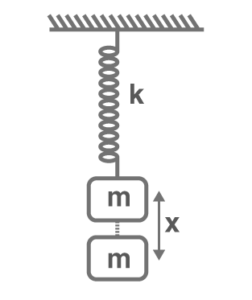a) what is the amplitude of oscillation?
b) find the frequency of oscillation?

Answer:
The mass m will oscillate between the lowest and the highest point, which is where it was held in hand. As a result, the lowest position and the hand position will be extreme positions for mass m oscillations.
(a) The amplitude of oscillation will be half of this distance. As a result, the oscillation’s amplitude is as follows:
A = 4/2 = 2cm
b) Similarly, the frequency of oscillation is v = 3.52 Hz
